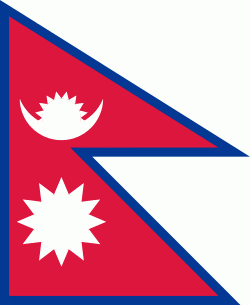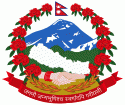Darchula (Dārchulā)
Khalanga (also called Darchula) is a town and the district headquarters of the Darchula District in the Sudurpashchim Province of Nepal. It is part of the Mahakali Municipality in the Mahakali Zone. The town is located on the bank of Mahakali River and the border with Uttarakhand state, India. The town on the Indian side of the border also has similar name, spelt as Dharchula.
Mahakali river is the border between Nepal and India. There is suspension bridge that connects the towns on the two sides. Indian and Nepalese nationals can cross the border without any restriction. The border is closed at night for security reasons. Although it is common for Nepalese nationals to go to India for buying goods, they need to go through the customs checkpoint established in both (India and Nepal) sides.
At the time of the 2001 Nepal census it had a population of 4,422 people living in 809 individual households.
Mahakali river is the border between Nepal and India. There is suspension bridge that connects the towns on the two sides. Indian and Nepalese nationals can cross the border without any restriction. The border is closed at night for security reasons. Although it is common for Nepalese nationals to go to India for buying goods, they need to go through the customs checkpoint established in both (India and Nepal) sides.
At the time of the 2001 Nepal census it had a population of 4,422 people living in 809 individual households.
Map - Darchula (Dārchulā)
Map
Country - Nepal
 |
 |
| Flag of Nepal | |
The name "Nepal" is first recorded in texts from the Vedic period of the Indian subcontinent, the era in ancient Nepal when Hinduism was founded, the predominant religion of the country. In the middle of the first millennium BC, Gautama Buddha, the founder of Buddhism, was born in Lumbini in southern Nepal. Parts of northern Nepal were intertwined with the culture of Tibet. The centrally located Kathmandu Valley is intertwined with the culture of Indo-Aryans, and was the seat of the prosperous Newar confederacy known as Nepal Mandala. The Himalayan branch of the ancient Silk Road was dominated by the valley's traders. The cosmopolitan region developed distinct traditional art and architecture. By the 18th century, the Gorkha Kingdom achieved the unification of Nepal. The Shah dynasty established the Kingdom of Nepal and later formed an alliance with the British Empire, under its Rana dynasty of premiers. The country was never colonised but served as a buffer state between Imperial China and British India. Parliamentary democracy was introduced in 1951 but was twice suspended by Nepalese monarchs, in 1960 and 2005. The Nepalese Civil War in the 1990s and early 2000s resulted in the establishment of a secular republic in 2008, ending the world's last Hindu monarchy.
Currency / Language
| ISO | Currency | Symbol | Significant figures |
|---|---|---|---|
| NPR | Nepalese rupee | ₨ | 2 |
| ISO | Language |
|---|---|
| EN | English language |
| NE | Nepali language |















